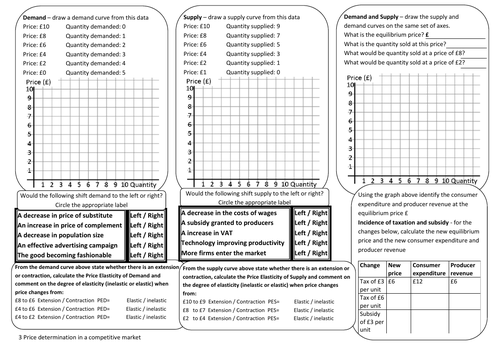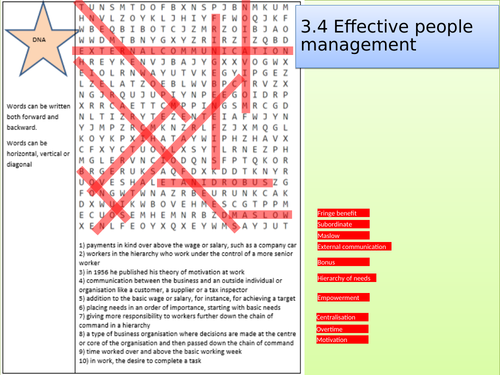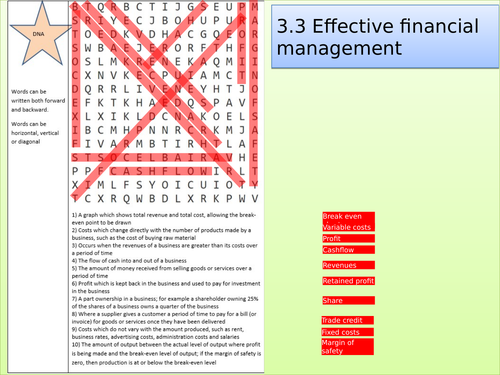155Uploads
218k+Views
225k+Downloads
All resources

AQA A-level Economics The labour market knowledge organiser
Knowledge organiser for the The labour market topic from the AQA A-level Economics. Includes a set of example answers.
Any suggestions/improvements/complaints please do comment and I will update it for future editions.

AQA A-level Economics Market structures knowledge organiser
Knowledge organiser for the Perfect competition, imperfectly competitive markets and monopoly topic from the AQA A-level Economics. Includes a set of example answers.
There is a version of this with AS and Year 12 Economics content which can be found here:
https://www.tes.com/teaching-resource/aqa-as-and-year-12-economics-competitive-and-concentrated-markets-knowledge-organiser-12146217
Any suggestions/improvements/complaints please do comment and I will update it for future editions.

AQA A-level Economics Production, costs and revenue knowledge organiser
Knowledge organiser for the Production, costs and revenue topic from the AQA A-level Economics. Includes a set of example answers.
There is a version of this with AS and Year 12 Economics content which can be found here:
https://www.tes.com/teaching-resource/aqa-as-and-year-12-economics-production-costs-and-revenue-knowledge-organiser-12146216
Any suggestions/improvements/complaints please do comment and I will update it for future editions.

AQA A-level Economics Price determination in a competitive market knowledge organiser
Knowledge organiser for the Price determination in a competitive market topic from the AQA A-level Economics. Includes a set of example answers.
Any suggestions/improvements/complaints please do comment and I will update it for future editions.

AQA A-level Economics Individual economic decision making behavioural economics knowledge organiser
Knowledge organiser for the Individual economic decision making topic from the AQA A-level Economics. Includes a set of example answers. The following words added to aid searches behavioural economics
Any suggestions/improvements/complaints please do comment and I will update it for future editions.

AQA A-level Economics Economic methodology and the economic problem knowledge organiser
Knowledge organiser for the Economic methodology and the economic problem topic from the AQA A-level Economics. Includes a set of example answers.
Any suggestions/improvements/complaints please do comment and I will update it for future editions.

Edexcel GCSE (9-1) Business 2.3 Making operational decisions word fill activity
A word fill activity for topic 2.3 Making operational decisions with answer sheet and slideshow for answers
Both .pdf and .docx file formats have been included
The font is OpenDyslexic - Free, OpenSource Dyslexia Typeface
http://opendyslexic.org/

Year 12 Microeconomics: The operation of markets and market failure end of topic tests
Updated 09/03/2018 to include test on the Economic methodology and the economic problem topic
End of topic tests for year 12 Microeconomics. Includes mark schemes, mailmerged feedback sheets and spreadsheet.
Topics are:
Economic methodology and the economic problem
Competitive markets
Production, costs and revenue
Competitive and concentrated markets
Market mechanism, market failure and government intervention
Economic methodology and the economic problem test consists of forty-five multiple choice questions.
The Competitive markets, Production, costs and revenue, Competitive and concentrated markets and Market mechanism, market failure and government intervention tests eacg consists of 10 MCQs, one 2 mark calulcate question, one 4 mark explain how the data shows question and one 9 mark ‘With the help of a diagram, explain…’ question.

Areas of surplus, revenue, expenditure and deadweight loss under perfect competition versus monopoly
Activity I use with year 13 to learn about the impact of monopolies on allocative efficiency.
The answers:
Consumer surplus under perfect competition? (1+2+3)
Producer surplus under perfect competition? (4+5)
Total surplus under perfect competition? (1+2+3+4+5)
Consumer expenditure/Producer revenue under perfect competition? (4+5+6+7)
Consumer surplus under monopoly? (1)
Producer surplus under monopoly? (2+4+6)
Total surplus under monopoly? (1+2+4+6)
Consumer expenditure/Producer revenue under monopoly? (2+4+6)
Deadweight welfare loss under monopoly? (3+5)
Bonus Question: (6)
The font is OpenDyslexic - Free, OpenSource Dyslexia Typeface
http://opendyslexic.org/

Edexcel GCSE (9-1) Business Topic 2.4 Making financial decisions: Understanding business performance
23 May 2022 - Updated again!
7 October 2021 - Updated!
A complete set of work for Understanding business performance. Includes a powerpoint with some of the crucial answers.
Some of the text on the presentation is in OpenDyslexic font - Free, OpenSource Dyslexia Typeface
http://opendyslexic.org/

Incidence of Taxation and Subsidy
A-level Economics lesson on incidence of taxation and subsidy. Includes:
Presentation on the incidence of taxation and subsidy.
Worksheet so students can work out the relationship between the incidence of taxation and Price Elasticity of Demand and Price Elasticity of Supply (answers in presentation).
A second set of worksheets identifying areas of tax and subsidy, and the impact of taxes and subsidies on economic welfare (answers in presentation).
Another worksheet on the size of tax and subsidy diagrams practice (includes a markscheme).
A short test of 10 multiple choice questions on the areas of tax and subsidy (includes a markscheme).
Any suggestions/improvements/complaints please do comment and I will update it for future editions.
Some of the font is OpenDyslexic - Free, OpenSource Dyslexia Typeface
http://opendyslexic.org/

Edexcel GCSE Business Studies Unit 1: Introduction to Small Business Beat the Teacher Jan 2011
For the end of teaching Unit 1 or for revision as the exam approaches. Lots of ways you can use this, I am going to give the paper one between two and the students can work out which answers are correct and which need correcting. I will only show them the 'clues' slide if they are really struggling.

Edexcel GCSE (9-1) Business formulas number triangles
Number triangles for all the formulas for GCSE (9-1) Business.
I cut the triangles up and get the students to fit them back together.
Any other ways to use the triangles do feel free to comment.
Font is in OpenDyslexic font - Free, OpenSource Dyslexia Typeface
http://opendyslexic.org/

Edexcel GCSE Business Studies topic 3.2 key words wordsearch
Key words taken from Edexcel GCSE Business: Building Business textbook.
Some of the text on the presentation is in OpenDyslexic font - Free, OpenSource Dyslexia Typeface
http://opendyslexic.org/

Edexcel GCSE Business Studies topic 3.5 key words wordsearch
Key words taken from Edexcel GCSE Business: Building Business textbook.
Some of the text on the presentation is in OpenDyslexic font - Free, OpenSource Dyslexia Typeface
http://opendyslexic.org/

Edexcel GCSE Business Studies topic 3.4 key words wordsearch
Key words taken from Edexcel GCSE Business: Building Business textbook.
Some of the text on the presentation is in OpenDyslexic font - Free, OpenSource Dyslexia Typeface
http://opendyslexic.org/

Edexcel GCSE Business Studies topic 3.3 key words wordsearch
Key words taken from Edexcel GCSE Business: Building Business textbook.
Some of the text on the presentation is in OpenDyslexic font - Free, OpenSource Dyslexia Typeface
http://opendyslexic.org/

Edexcel GCSE Business Studies topic 3.1 key words wordsearch
Key words taken from Edexcel GCSE Business: Building Business textbook.
Some of the text on the presentation is in OpenDyslexic font - Free, OpenSource Dyslexia Typeface
http://opendyslexic.org/

Graphing the law of diminishing marginal returns and Returns to scale activity
Assumes prior knowledge of how to calculate Average cost, the Law of Diminishing Returns, Internal Economies of Scale and Internal Diseconomies of scale.
Student handout is: graphing-LRAC.pdf
Presentation is: Graphing-the-law-of-diminishing-marginal-returns-and-Returns-to-scale.ppt
And the spreadsheet is also attached.
Some of the font is in OpenDyslexic font - Free, OpenSource Dyslexia Typeface
http://opendyslexic.org/

Guide to the new Edexcel GCSE (9-1) Business
A guide to the new Edexcel GCSE (9-1) Business. I created it to hand out at parents evening.
Font is in OpenDyslexic font - Free, OpenSource Dyslexia Typeface
Contents:
Course Code
Overview of the changes
Structure of GCSE (9-1) Business
New content
Removed content
Structure of papers and Command Words
Summary of new Command Words
-Define/Give/Identify/State 1 mark
-Complete the table 1 mark
-Calculate 2 marks
-Outline 2 marks
-Explain 3 marks
-Discuss 6 marks
-Analyse 6 marks
-Justify 9 marks
-Evaluate 12 marks
Formulae




















